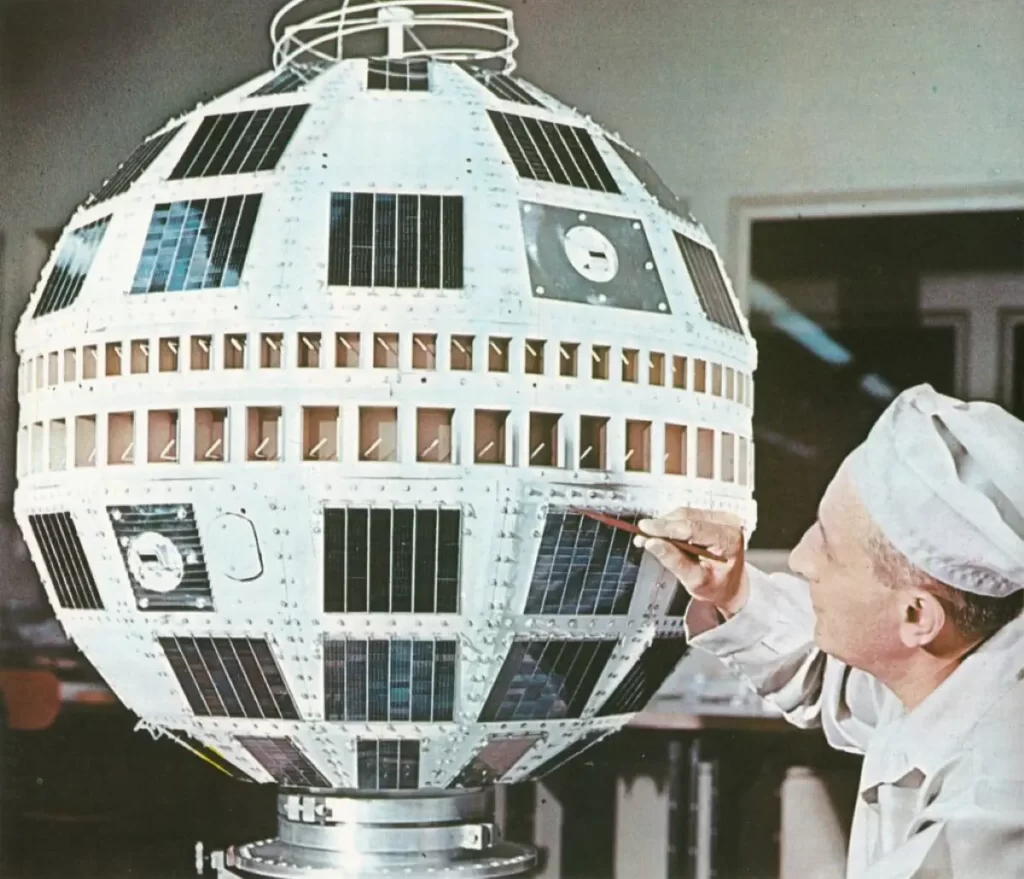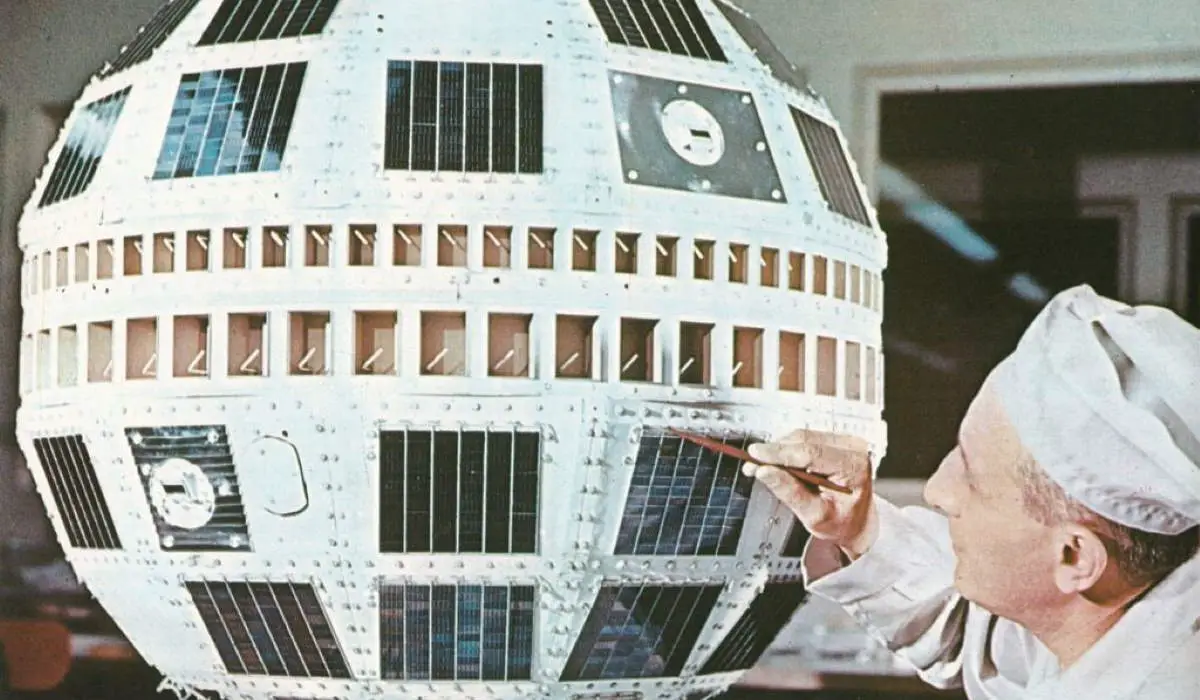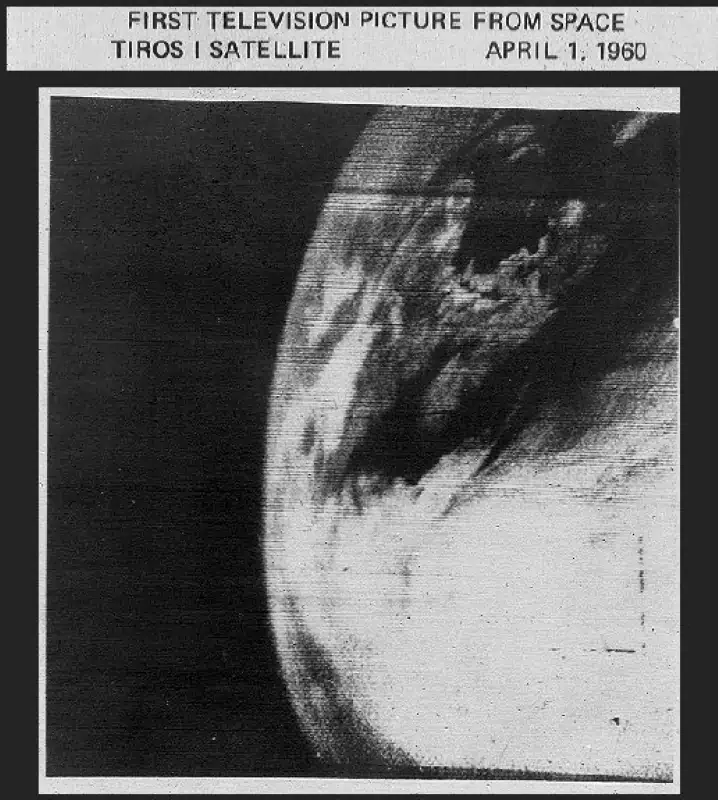On July 10, 1962, Telstar 1, the satellite that allowed the first live broadcast of television images was launched from Cape Canaveral. It was the first privately sponsored space mission. Two days after the launch, on July 12, it relayed the world’s first transatlantic television signal, from Andover Earth Station, Maine, United States, to the Pleumeur-Bodou Telecom Center, Brittany, France.
Today’s (July 10) story of what happened this day in Science, Technology, Astronomy, and Space Exploration history.
Telstar 1
Developed by Bell Telephone Laboratories for AT&T, Telstar 1 was primarily a communications satellite, but it also carried a piece of experimental equipment designed to measure the energetic proton and electron distribution in the Van Allen belts, a zone of energetic charged particles, most of which originate from the solar wind, that are captured by and held around a planet by the Earth’s magnetosphere.
During its operational lifetime, it demonstrated the feasibility of transmitting information via satellite, gained experience in satellite tracking, and studied the effect of Van Allen radiation belts on satellite design.
Telstar operated in a low-Earth orbit and was tracked by the ground stations in Maine and France. Its perigee altitude was 952 kilometers (592 miles) and its apogee altitude was 5,933 kilometers (3,687 miles).
The first images transmitted by Telstar 1, those of President John F. Kennedy and of singer Yves Montand from France, along with clips of sporting events, images of the American flag waving in the breeze, and a still image of Mount Rushmore, were precursors of the global communications that today are mostly taken for granted.

On July 9, 1962, the United States conducted a high-altitude nuclear test, nicknamed Starfish Prime. It was the largest nuclear test conducted in outer space. The total yield was 1.4 megatons, at least 930 times more powerful than the Hiroshima atomic bomb.
The test resulted in energetic charged particles forming an artificial radiation belt which had the effect of damaging many operating satellites. Launched just after one day from the Starfish Prime, Telstar 1 also encountered these charging particles and was damaged.
The spacecraft operated normally from launch until November 1962, though, when the command channel began to behave erratically. The satellite was turned on continuously to circumvent this problem.
On November 23, 1962, the command channel ceased to respond. On December 20, the satellite was successfully reactivated, and intermittent data were obtained until February 21, 1963, when the transmitter failed.
Although operational for just more than seven months and relaying television signals of brief duration, Telstar 1 facilitated over 400 telephone, telegraph, facsimile, and television transmissions, and demonstrated the feasibility of transmitting information via satellites around Earth.
Telstar 1 opened the era of “live via satellite” TV broadcast. Since this time, thousands of communications satellites have been launched into Earth’s orbit.
Later communications satellites adopted a much higher orbit, in geostationary Earth orbit, or geosynchronous equatorial orbit (GEO), a circular orbit 35,786 kilometers (22,236 miles) above the Earth. This higher orbit enables the satellite’s speed to match the Earth’s rotation and thus appeared fixed in the sky.
Sources
- Telstar 1 on Wikipedia
- Telstar 1 on the NASA Space Science Data Coordinated Archive website
- “Telstar: the 60 years-old satellite that commenced the modernity” on the Universe Magazine website
- “July 12, 1962: The Day Information Went Global” on the NASA website
- Space Shuttle Endeavour’s Touchdown Meets Columbia’s Salute [An amazing photo from the past] - February 29, 2024
- Moon Landings: All-Time List [1966-2024] - February 23, 2024
- From Orbit to Ordinary: 10 Earthly Applications of Space Technology - January 23, 2024

